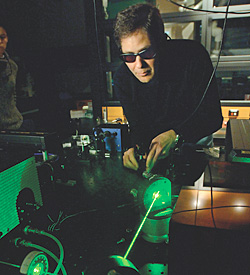INDIAN ARMED FORCES CHIEFS ON OUR RELENTLESS AND FOCUSED PUBLISHING EFFORTS

The insightful articles, inspiring narrations and analytical perspectives presented by the Editorial Team, establish an alluring connect with the reader. My compliments and best wishes to SP Guide Publications.

"Over the past 60 years, the growth of SP Guide Publications has mirrored the rising stature of Indian Navy. Its well-researched and informative magazines on Defence and Aerospace sector have served to shape an educated opinion of our military personnel, policy makers and the public alike. I wish SP's Publication team continued success, fair winds and following seas in all future endeavour!"

Since, its inception in 1964, SP Guide Publications has consistently demonstrated commitment to high-quality journalism in the aerospace and defence sectors, earning a well-deserved reputation as Asia's largest media house in this domain. I wish SP Guide Publications continued success in its pursuit of excellence.
- Indian Air Force Aims for Full Indigenous Inventory by 2047 — Air Chief Marshal A.P. Singh
- General Upendra Dwivedi takes over as the Chief of the Army Staff
- Rajnath Singh assumes charge as Defence Minister for the second consecutive term
- Admiral Dinesh K. Tripathi assumes Command of the Indian Navy as 26th Chief of the Naval Staff
- Prime Minister witnesses 'Bharat Shakti' – a Tri-Services Firing and Manoeuvre Exercise in Pokhran, Rajasthan
Michigan State University develops laser that detects bombs

A research team at Michigan State University (MSU) has developed a laser that could detect roadside bombs – the deadliest enemy weapon encountered in Iraq and Afghanistan.
The laser, which has comparable output to a simple presentation pointer, potentially has the sensitivity and selectivity to canvas large areas and detect improvised explosive devices – weapons that account for around 60 per cent of coalition soldiers’ deaths. Marcos Dantus, chemistry professor and founder of BioPhotonic Solutions, led the team and has published the results in the current issue of Applied Physics Letters.
The detection of IEDs in the field is extremely important and challenging because the environment introduces a large number of chemical compounds that mask the select few molecules that one is trying to detect, Dantus said.
“Having molecular structure sensitivity is critical for identifying explosives and avoiding unnecessary evacuation of buildings and closing roads due to false alarms,” he said.
Since IEDs can be found in populated areas, the methods to detect these weapons must be non-destructive. They also must be able to distinguish explosives from vast arrays of similar compounds that can be found in urban environments. Dantus’ latest laser can make these distinctions even for quantities as small as a fraction of a billionth of a gram.
The laser beam combines short pulses that kick the molecules and make them vibrate, as well as long pulses that are used to “listen” and identify the different “chords.” The chords include different vibrational frequencies that uniquely identify every molecule, much like a fingerprint. The high-sensitivity laser can work in tandem with cameras and allows users to scan questionable areas from a safe distance.
“The laser and the method we’ve developed were originally intended for microscopes, but we were able to adapt and broaden its use to demonstrate its effectiveness for standoff detection of explosives,” said Dantus, who hopes to net additional funding to take this laser from the lab and into the field.
This research is funded in part by the Department of Homeland Security. Bio-Photonic Solutions is a high-tech company Dantus launched in 2003 to commercialise technology invented in a spinoff from his research group at MSU.





